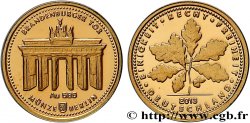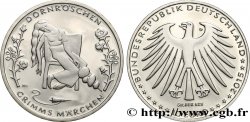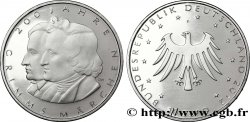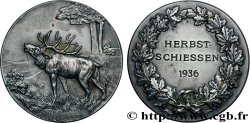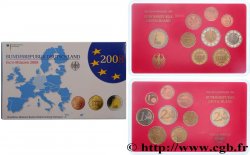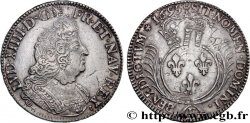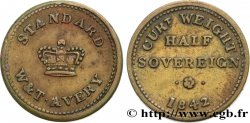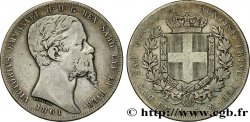Live auction - fme_367381 - GERMANY Médaille de Saxe Meiningen
You must signin and be an approved bidder to bid, LOGIN TO BID. Accounts are subject to approval and the approval process takes place within 48 hours. Do not wait until the day a sale closes to register. Clicking on "BID" constitutes acceptance of the terms of use of cgb.fr private live auctions.
Bids must be placed in whole Euro amounts only. The sale will start closing at the time stated on the item description; any bids received at the site after the closing time will not be executed. Transmission times may vary and bids could be rejected if you wait until the last second. For further information check the Live auction FAQ
All winning bids are subject to a 18% buyer’s fee.
All winning bids are subject to a 18% buyer’s fee.
| Estimate : | 300 € |
| Price : | no bid |
| Maximum bid : | no bid |
| End of the sale : | 31 January 2017 17:33:32 |
Type : Médaille de Saxe Meiningen
Date: 1891
Mint name / Town : Allemagne, Dresde
Metal : copper
Diameter : 42,5 mm
Orientation dies : 12 h.
Engraver HECET / L. CHR. LAUER NURNBERG
Weight : 33 g.
Edge : lisse
Coments on the condition:
Superbe médaille, particulièrement intéressante, avec une très belle patine de collection et de très légères marques de circulation
Obverse
Obverse legend : JOH : GEORG. HERZOG. Z : SACHSEN. PROTECT : D : ALLG : DEUTSCH : MÜNZFORSCHERVEREINS.
Obverse description : Buste jeune de Georges II de Saxe-Meiningen à droite.
Reverse
Reverse legend : V. VEREINSTAG DEUTSCHER MÜNZFORSCHER // DRESDEN 9. OCTOB. / 1891.
Reverse description : Vue du Château de la Résidence de Dresde.
Commentary
La traduction des légendes en allemand de cette médaille semble présenter Georges II comme le protecteur des Numismates ?!
Georges II de Saxe-Meiningen et Hildburgausen, surnommé « le duc de théâtre », né à Meiningen le 2 avril 1826, décédé à Bad Wildungen le 25 juin 1914. Ses parents lui fournirent une solide éducation. Une formation militaire comme il sied à tout prince de cette époque, il étudia également l'histoire, la loi, l'économie politique. Aux universités de Bonn et de Leipzig il acquit de solides connaissances dans le domaine de l'histoire de l'art.
Georges II de Saxe-Meiningen et Hilburghausen fut un passionné de peinture et, mécène, il soutint particulièrement les travaux d'artistes graphistes totalement inconnus. Il travailla avec des artistes réputés tels qu'Adolf von Hildebrand ou Franz von Lenbach et fit l'acquisition de tableaux de la Renaissance italienne.
Mais le duc Georges II de Saxe-Meiningen-Hildburghausen eut d'autres passions artistiques, il fit venir à sa Cour de Saxe-Meiningen des chefs d'orchestre tel que Hans von Bülow, le compositeur Richard Strauss, Fritz Steinback pour diriger l'orchestre que le duc avait lui-même créé. Cet orchestre devint très célèbre en Europe. Il fut l'ami de Johannes Brahms et de Richard Wagner.
Georges II de Saxe-Meiningen-Hildburhausen transforma certaines parties des châteaux de Meiningen, le château Elisabethenburg (Schloss Elisabethenburg), le château d'Altenstein et le Veste Heldburg en châteaux néorenaissances.
Le château de la Résidence de Dresde (Residenzschloss Dresden en allemand) accueille certains des plus importants musées d’Europe, les musées des collections nationales de Dresde. Il est situé entre la Frauenkirche et le palais Zwinger dans la capitale de la Saxe (Allemagne). La Cathédrale de la Sainte-Trinité de Dresde s'attache au château..
The translation of the German legends of this medal seems to present George II as the protector of Numismatists?! George II of Saxe-Meiningen and Hildburgausen, nicknamed \\\"the theater duke\\\", born in Meiningen on April 2, 1826, died in Bad Wildungen on June 25, 1914. His parents provided him with a solid education. A military trainee as befitted any prince of that time, he also studied history, law, political economy. At the universities of Bonn and Leipzig he acquired a solid knowledge in the field of art history..
George II of Saxe-Meiningen and Hilburghausen was passionate about painting and, as a patron, he particularly supported the work of completely unknown graphic artists.. He worked with renowned artists such as Adolf von Hildebrand and Franz von Lenbach and acquired paintings from the Italian Renaissance..
But Duke George II of Saxe-Meiningen-Hildburghausen had other artistic passions, he brought to his Court of Saxe-Meiningen conductors such as Hans von Bülow, the composer Richard Strauss, Fritz Steinback to lead the orchestra that the duke himself had created. This orchestra became very famous in Europe. He was a friend of Johannes Brahms and Richard Wagner..
George II of Saxe-Meiningen-Hildburhausen transformed parts of the Meiningen castles, Elisabethenburg Castle (Schloss Elisabethenburg), Altenstein Castle and Veste Heldburg into neo-Renaissance castles..
The Dresden Residenzschloss Dresden is home to some of Europe's most important museums, the Dresden State Collections Museums.. It is located between the Frauenkirche and the Zwinger Palace in the capital of Saxony (Germany). The Dresden Cathedral of the Holy Trinity is attached to the castle.
Georges II de Saxe-Meiningen et Hildburgausen, surnommé « le duc de théâtre », né à Meiningen le 2 avril 1826, décédé à Bad Wildungen le 25 juin 1914. Ses parents lui fournirent une solide éducation. Une formation militaire comme il sied à tout prince de cette époque, il étudia également l'histoire, la loi, l'économie politique. Aux universités de Bonn et de Leipzig il acquit de solides connaissances dans le domaine de l'histoire de l'art.
Georges II de Saxe-Meiningen et Hilburghausen fut un passionné de peinture et, mécène, il soutint particulièrement les travaux d'artistes graphistes totalement inconnus. Il travailla avec des artistes réputés tels qu'Adolf von Hildebrand ou Franz von Lenbach et fit l'acquisition de tableaux de la Renaissance italienne.
Mais le duc Georges II de Saxe-Meiningen-Hildburghausen eut d'autres passions artistiques, il fit venir à sa Cour de Saxe-Meiningen des chefs d'orchestre tel que Hans von Bülow, le compositeur Richard Strauss, Fritz Steinback pour diriger l'orchestre que le duc avait lui-même créé. Cet orchestre devint très célèbre en Europe. Il fut l'ami de Johannes Brahms et de Richard Wagner.
Georges II de Saxe-Meiningen-Hildburhausen transforma certaines parties des châteaux de Meiningen, le château Elisabethenburg (Schloss Elisabethenburg), le château d'Altenstein et le Veste Heldburg en châteaux néorenaissances.
Le château de la Résidence de Dresde (Residenzschloss Dresden en allemand) accueille certains des plus importants musées d’Europe, les musées des collections nationales de Dresde. Il est situé entre la Frauenkirche et le palais Zwinger dans la capitale de la Saxe (Allemagne). La Cathédrale de la Sainte-Trinité de Dresde s'attache au château..
The translation of the German legends of this medal seems to present George II as the protector of Numismatists?! George II of Saxe-Meiningen and Hildburgausen, nicknamed \\\"the theater duke\\\", born in Meiningen on April 2, 1826, died in Bad Wildungen on June 25, 1914. His parents provided him with a solid education. A military trainee as befitted any prince of that time, he also studied history, law, political economy. At the universities of Bonn and Leipzig he acquired a solid knowledge in the field of art history..
George II of Saxe-Meiningen and Hilburghausen was passionate about painting and, as a patron, he particularly supported the work of completely unknown graphic artists.. He worked with renowned artists such as Adolf von Hildebrand and Franz von Lenbach and acquired paintings from the Italian Renaissance..
But Duke George II of Saxe-Meiningen-Hildburghausen had other artistic passions, he brought to his Court of Saxe-Meiningen conductors such as Hans von Bülow, the composer Richard Strauss, Fritz Steinback to lead the orchestra that the duke himself had created. This orchestra became very famous in Europe. He was a friend of Johannes Brahms and Richard Wagner..
George II of Saxe-Meiningen-Hildburhausen transformed parts of the Meiningen castles, Elisabethenburg Castle (Schloss Elisabethenburg), Altenstein Castle and Veste Heldburg into neo-Renaissance castles..
The Dresden Residenzschloss Dresden is home to some of Europe's most important museums, the Dresden State Collections Museums.. It is located between the Frauenkirche and the Zwinger Palace in the capital of Saxony (Germany). The Dresden Cathedral of the Holy Trinity is attached to the castle.







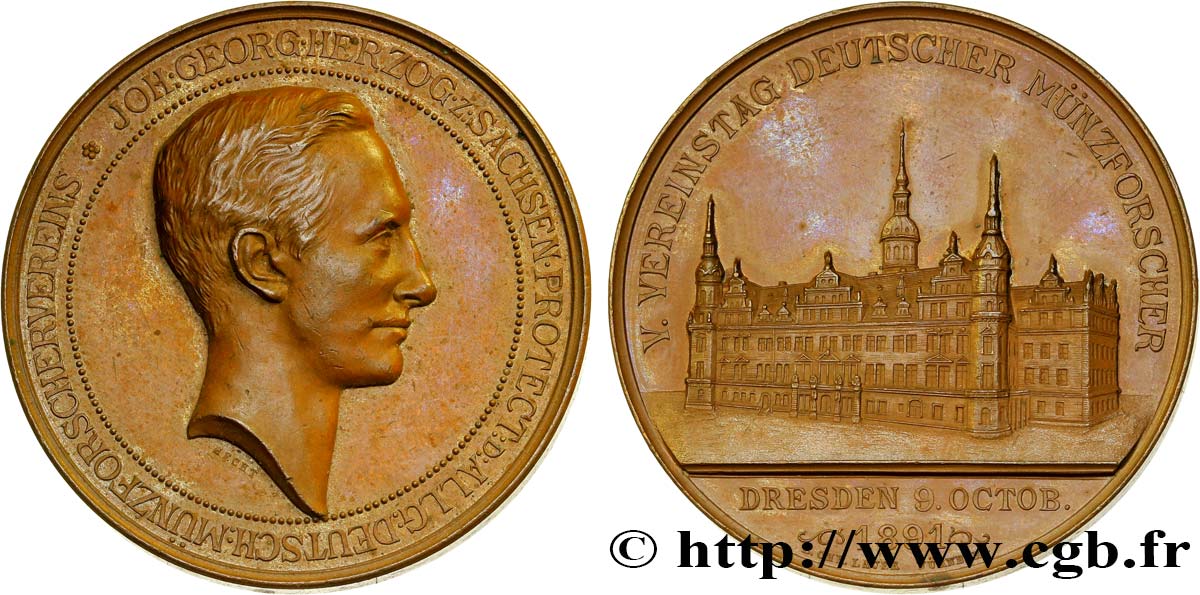
 Report a mistake
Report a mistake Print the page
Print the page Share my selection
Share my selection Ask a question
Ask a question Consign / sell
Consign / sell
 Full data
Full data